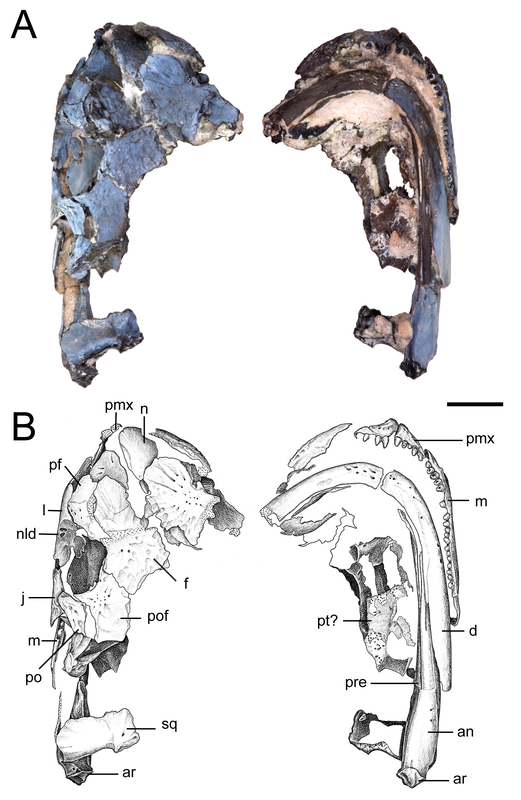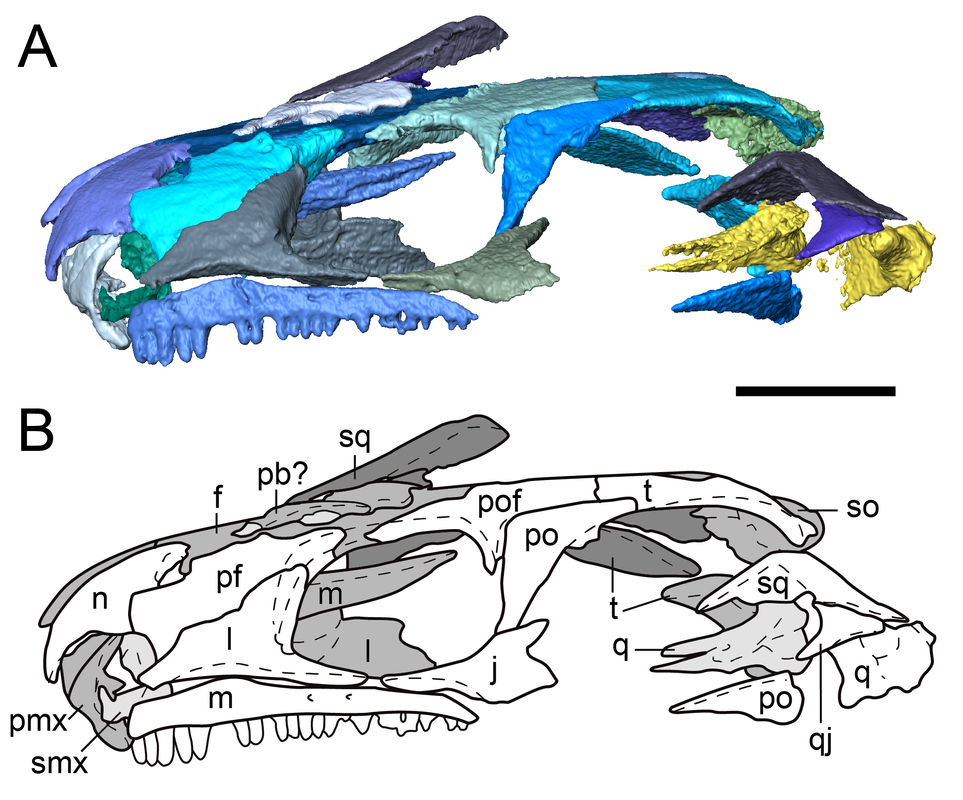Microsaurs |
'Microsaurs' are a controversial group of small-bodied Paleozoic tetrapods that are most common in the Late Carboniferous and the early Permian. The quotation marks around the name indicate that most workers consider them to be a paraphyletic assemblage of only distantly related taxa. Their phylogenetic position remains poorly resolved as a result; they have been hypothesized to be everything from the ancestors of modern amphibians (rather than temnospondyls) to stem amniotes to crown amniotes like captorhinid reptiles. Figuring out where they fit in the framework of early tetrapods is one of the hot debates among Paleozoic workers. We are sure that they are not temnospondyls though!
Many of the best known ones exhibit numerous adaptations for living underground and for digging burrows with their heads, such as heavily ossified skulls with reinforced braincases and recumbent snouts, features they share with many extant burrowing animals like caecilians and amphisbaenians (worm lizards). I never intended to get bogged down in 'microsaurs,' but they probably have the most extensively developed digital library of CT scans of any Paleozoic tetrapod to date and are much better than many temnospondyls for assessing the morphology of the braincase because they actually ossify it. |


